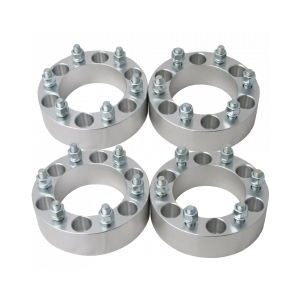Aug . 31, 2024 08:03 Back to list
Wiper Seal for Hydraulic Cylinder - Enhance Sealing Efficiency
Understanding Wiper Seals in Hydraulic Cylinders
Hydraulic cylinders are critical components in various industrial applications, providing the necessary force and motion to drive machinery. Among the various components of a hydraulic cylinder, the wiper seal plays a significant role in ensuring its optimal performance and longevity. This article explores the importance of wiper seals in hydraulic cylinders, their functions, types, and maintenance considerations.
What is a Wiper Seal?
A wiper seal, also known as a dust seal, is designed to prevent contaminants from entering the hydraulic cylinder. These contaminants can include dirt, dust, and moisture, which, if allowed to infiltrate, can cause significant damage to the internal components of the hydraulic system. Wiper seals are typically made from resilient materials such as rubber, polyurethane, or other elastomers, which offer durability and effective sealing capabilities.
Functions of Wiper Seals
The primary function of a wiper seal is to act as a barrier against external contaminants. As the piston of the hydraulic cylinder extends and retracts, the wiper seal wipes the piston rod, preventing dirt and debris from entering the cylinder. This function is crucial in maintaining system efficiency and prolonging the life of the hydraulic cylinder.
In addition to keeping contaminants out, wiper seals also play a role in preventing hydraulic fluid from leaking out of the cylinder. Although the primary sealing function is typically performed by the main sealing elements inside the cylinder, the wiper seal adds an extra layer of safety by minimizing the risk of fluid loss around the rod.
Types of Wiper Seals
Wiper seals come in various shapes and sizes, tailored to fit different hydraulic applications
. Some of the most common types includewiper seal hydraulic cylinder

1. Flat Wiper Seals Ideal for applications with low-speed rod movements, these seals are straightforward in design and easy to install.
2. U-Cup Wiper Seals These are designed with a U-shaped groove and provide better sealing performance, especially in applications with higher speeds and pressures.
3. Specialized Wiper Seals Some manufacturers offer specialized designs to meet unique application needs, including variations that enhance wear resistance or cater to extreme temperatures.
Maintenance Considerations
Ensuring the longevity of wiper seals requires regular maintenance and inspection. Operators should routinely check for signs of wear, such as cracking, fraying, or deformation. If a wiper seal shows any signs of damage, it should be replaced promptly to avoid further complications in the hydraulic system.
Moreover, maintaining cleanliness around the hydraulic cylinder is vital. Operators should use clean tools when servicing the cylinder and employ protective covers when the equipment is not in use to minimize exposure to contaminants.
Conclusion
Wiper seals are essential components of hydraulic cylinders, providing a vital line of defense against dirt and moisture that can impair system function. Understanding their role, types, and maintenance requirements is crucial for anyone operating hydraulic machinery. By prioritizing wiper seal integrity, operators can ensure the efficiency and longevity of hydraulic systems, ultimately leading to enhanced performance and reduced operational costs. Proper attention to these small yet critical components can significantly impact the overall reliability of hydraulic machinery in various industrial applications.
-
TCN Oil Seal Metal Ring Reinforcement for Heavy Machinery
NewsJul.25,2025
-
Rotary Lip Seal Spring-Loaded Design for High-Speed Applications
NewsJul.25,2025
-
Hydraulic Cylinder Seals Polyurethane Material for High-Impact Jobs
NewsJul.25,2025
-
High Pressure Oil Seal Polyurethane Coating Wear Resistance
NewsJul.25,2025
-
Dust Proof Seal Double Lip Design for Construction Equipment
NewsJul.25,2025
-
Hub Seal Polyurethane Wear Resistance in Agricultural Vehicles
NewsJul.25,2025
-
The Trans-formative Journey of Wheel Hub Oil Seals
NewsJun.06,2025
Products categories
















